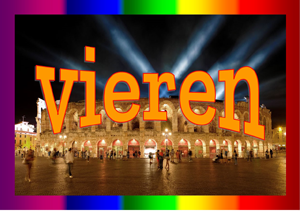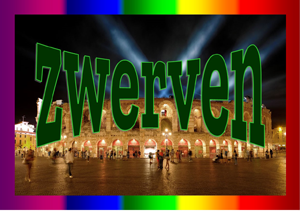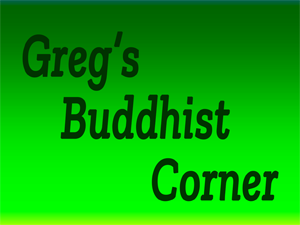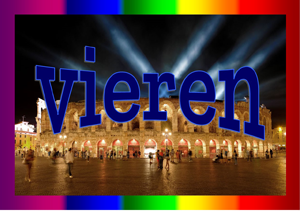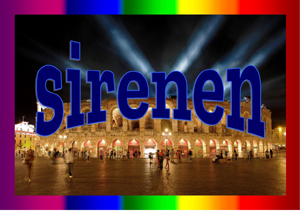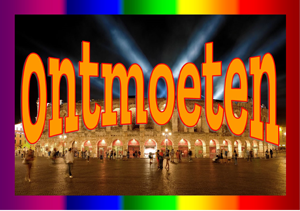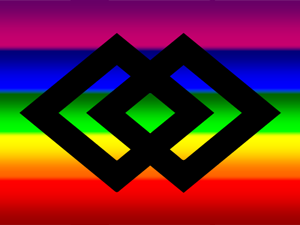By Greg Suffanti
QFWF, March 2019
Magha Puja Day is considered one of the most important Buddhist festival/holy days in the Theravada Buddhist calendar.
The holy day marks an event in the life of the Buddha when 1,250 of his ordained disciples spontaneously gathered at the Veluvana grove in northern India.
Magha is the name of the third lunar month
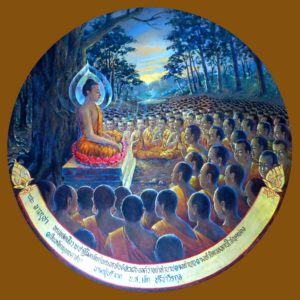
The holy day is celebrated on the full moon day of the third lunar month (19 February 2019) in Cambodia, Laos, Thailand and Sri Lanka, and on the full moon of the Tabaung (21 March 2019), in Myanmar. The Taubaung marks the last full moon of the 12th and last month of the Burmese calendar[2].
Puja is a Sanskrit word that means to honor, pay reverence, or worship
Magha Puja Day is also known as Sangha Day. The Pali word sangha, meaning ‘community’ or ‘assembly’, here refers to the Buddhist community of monks and nuns and lay men and women.
A puja is a ritual prayer, and the Sanskrit word ‘puja’ is used by other religious traditions as well, such as Hindus. The Sanskrit word itself means to pay reverence, to honor or to worship. Some traditions hold that these four types of students of the Buddha is the reason the holy day is sometimes also called “Fourfold Assembly Day”. Other traditions maintain that the reference to “Fourfold Assembly Day” refers to four specific conditions that spontaneously came together on that full moon day:
- All the monks who attended were arhats, meaning that they were close to enlightenment
- All of the monks in attendance had been ordained by the Buddha
- The coming together of the 1,250 monks was serendipitous, as there was nothing planned.
- It was the full moon of the Magha (the third lunar month)[3].
The Ovada Patimokkha was a practical guide on ethics and behavior for the sangha
At that spontaneous gathering of monks that evening, the Buddha delivered a sermon called the Ovada Patimokkha, which was a teaching on ethics and conduct for the ordained. The Ovada Patimokkha was taught at a time before there were written and detailed rules for monastics and monastic life.[4]
Paying respect to the sangha with food, flowers and light processions
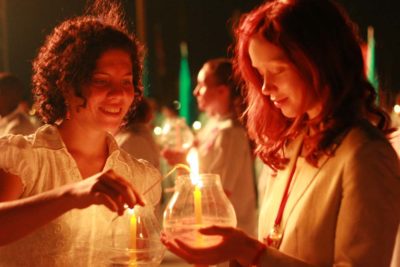
Magha Puja Day is more contemplative in nature then celebrations for the new year, for example, and typically, there are food offerings for the Sangha in the morning and afternoon, and light and flower offerings at temples. The afternoons are spent listening or reading Buddhist scripture, and the evenings see candlelight processions circumambulating temples, stupas and other holy objects. The tradition is to walk clockwise (circumambulate) around the holy object three times, paying homage to the Three Jewels: the Buddha, his teachings called the Dharma, and the community that supports and upholds the Dharma called the Sangha[6].
The first recorded celebrations were by Thai king Rama IV
The exact time and date of how and when Magha Puja Day first came into observance is not known. In modern times, the first recorded observance was by Thai king Rama IV (1804-1868). The king celebrated the event privately at the palace, declaring it a national holiday. It has since grown in prominence and is celebrated today by millions of Theravada Buddhists around the world.[7]
Notes
[1] Source: The Buddha preaches the Ovada Patimokkha to 1,250 Arahants at Magha Full Moon Day
[2] https://en.wikipedia.org/wiki/Magha_Puja
[3] www.thoughtco.com/magha-puja
[4] www.buddhism.org/Sutras/DHARMA/Tripitaka/OuadaPatimokka
[5] Source: A youth program held in Thailand, the youth are joining in with a Māgha Pūjā celebrationg
[6] www.thaipod101.com/blog/2019/02/13/magha-puja-day
[7] www.buddhistdoor.net/features/the-magha-puja-festival-a-time-to-make-merit-for-southeast-asian-buddhists

